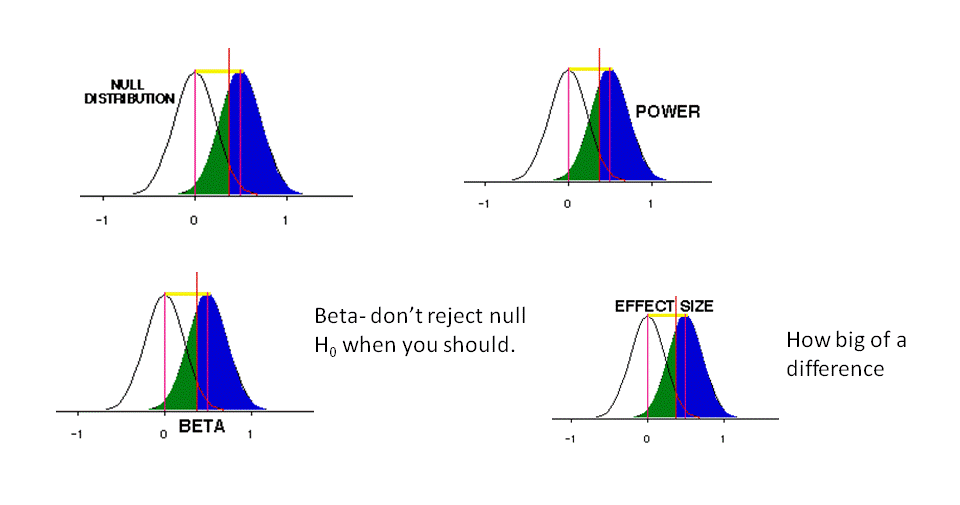Rationale for Numbers of Animals
Details
Regulations
Federal law, policy, and U.S. Government Principle III mandate that investigators use the minimum number of animals necessary to obtain valid results.
- USDA Animal Welfare Regulations Code of Federal Regulations, title 9, Chapter 1, Subchapter A
- NIH PHS Policy on Humane Care and Use of Laboratory Animals
Section 4 of the IACUC protocol addresses this requirement. "Section 4: Rationale for Numbers of Animals. Provide the rationale for the number of animals requested and how the number of animals was determined to be appropriate. Whenever possible, the number of animals requested should be justified statistically."
- In general, this means doing a power analysis.
- Alternatively, if animal numbers to be used are based on previous work or publications, provide citations
Statistical Relationship Between Power and Sample Size
How Many Subjects Do You Need?
Power Analysis: Power refers to the probability of avoiding a Type II error, or, the ability of your statistical test to detect true differences when they are there.

The power of your test generally depends on four things: your sample size, the effect size you want to be able to detect (usually medium), the Type I error rate (alpha, usually .05), and the variability of the sample. Power is usually specified at 0.80, that is, 80% likely to be right.


Calculators
Free Online Calculators
UI Licensed Software
- SPSS Sample Power – part of SPSS package
Buy this software at Webstores.
Information You Should Include in Section 4
Expectations of information that should be included in section 4:
- Experimental design
- Assumptions
- Variable used to establish number (i.e., hematocrit, muscle LDH)
- Expected treatment differences, effect size expected or being tested for
- Source of estimated variation used (i.e., citation)
- Alpha, Power
- Determined experimental sample size
- Calculation of total animal request based on power, described experiments, expected loss